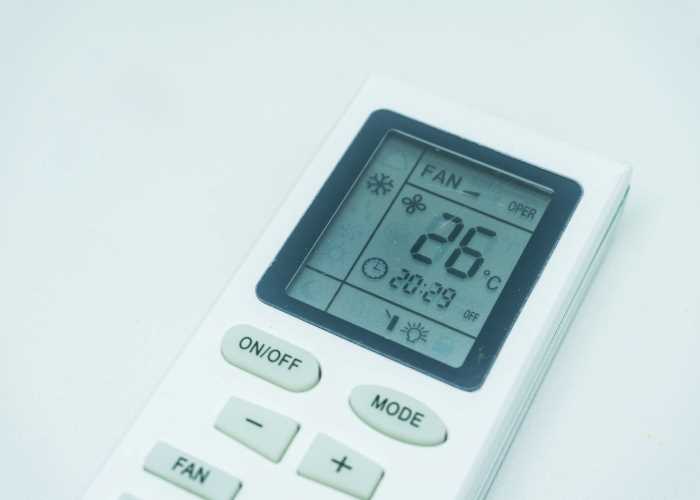A modern AC system can be a great addition to your home, providing year round comfort with both heating and cooling functionality.
However, to truly benefit from your system, it's essential to understand its various modes and how to use them effectively.
Knowing how to navigate these controls can help you achieve optimal comfort, improve energy efficiency, and prolong the lifespan of your equipment.
It’s important to note here that every manufacturer will have its own set of features. And to really get to grips with your home AC system, it’s best to consult your user manual.
That said, there are some basic modes you’ll find common across the board. There’s also a set of more advanced modes that you’ll find on many modern systems. We cover these below.

Cool mode is the most commonly used setting during the warmer months. When your AC is in cool mode, it lowers the indoor temperature to a pre-set level by blowing cool air into the room.
This mode is perfect for those hot summer days when the heat becomes unbearable. However, it's important to set a reasonable temperature to avoid excessive energy consumption. The recommended range is 21-22°C.
Any sudden drops in temperature will strain the unit and lead to higher energy bills.
Heat mode allows your AC system to double as a heater by reversing the refrigeration cycle. In this mode, the AC extracts heat from the outside air and transfers it indoors to warm your home.
This process is more energy-efficient compared to traditional gas heating systems. By using the ambient outdoor heat, the AC uses less electricity to achieve the same level of warmth.
Heat mode is particularly beneficial during milder winter days when you don't need the full power of a central heating system.
Auto mode takes the guesswork out of maintaining a comfortable home environment. It does this by automatically adjusting the AC's settings.
In this mode, the system switches between heating and cooling as needed to keep the room at your selected temperature.
Keep in mind though that auto mode relies on the accuracy of your system's thermostat. If you experience extreme fluctuations, it could be a sign your thermostat needs recalibrating.
Fan mode circulates air throughout your home without actively heating or cooling it. This improves air circulation to ensure a more even distribution of temperature.
It's particularly useful in rooms where airflow might be limited, such as larger spaces.
Fan mode reduces energy consumption as the compressor isn't in use. However, it will only circulate existing air and won't change its temperature.
Swing mode adjusts the direction of the air flow by moving the horizontal and vertical louvres.
This mode ensures a more even distribution of air throughout the room, preventing hot or cold spots to enhance comfort.
While beneficial, overuse of swing mode can sometimes lead to drafts, so it’s important to adjust the settings according to your comfort preferences.
Dry mode is particularly useful in humid climates. It reduces the moisture in the air without significantly lowering the temperature, making it ideal for those sticky, damp days.
This mode can help prevent mould growth and improve indoor air quality. It’s important not to overuse it though, as it can sometimes cause the air to become too dry. This can lead to discomfort or health issues like dry skin and respiratory problems.

A common function of modern systems, eco mode does what you'd expect. It lowers energy consumption by adjusting the cooling or heating output to run more efficiently.
It does this by increasing the fan speed, and running at a temperature of around two degrees higher or lower than your set temperature (depending on whether it's cooling or heating). This mode is perfect if you’re looking to reduce your carbon footprint and save on electricity bills.
However, it may not cool or heat your home as quickly as other modes. So it’s best used when you can afford a bit more time for your home to reach the desired temperature.
Turbo mode or high power mode is the go-to setting when you need to cool down or heat up a room quickly. This mode runs the system at maximum capacity to achieve the desired temperature in the shortest time possible.
It’s ideal for extreme temperature days when you come home and need immediate relief. However, this mode is energy-intensive and should be used sparingly to avoid high electricity costs and undue stress on the system.
Quiet mode or silent mode reduces the operational noise of the AC unit. This makes it perfect for use at night or in noise-sensitive environments like home offices.
This mode typically runs the fan at a lower speed and reduces compressor noise.
While it enhances comfort by minimising disruptions, it might also lower the efficiency of cooling or heating slightly. So it’s best used when noise reduction is a priority.
Understanding the modes of your home AC system, and how to use them effectively, can significantly enhance your comfort. It will also improve energy efficiency, and protect equipment from wear and tear.
Remember though that air conditioning controls vary by system and manufacturer. Always consult your user manual for instructions specific to your model.
